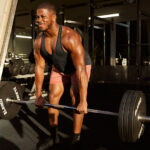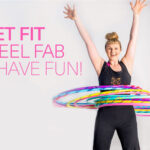Choosing the right workout shoes depends on the type of physical activity you plan to do. Look for shoes with flat, non-skid soles, good heel support, enough room for your toes, and a cushioned arch that’s not too high or too thick.
Ensure the shoes fit well and provide proper support for your feet. When it comes to selecting the right workout shoes for different activities, it’s crucial to consider the specific requirements of each exercise. Whether it’s running, weightlifting, or cross-training, having the appropriate footwear can enhance performance and prevent injuries.
Let’s delve into the essential factors to consider when choosing workout shoes for various activities, ensuring you make informed decisions that align with your fitness goals and overall well-being.
The Importance Of Sport-specific Footwear
Choosing the right workout shoes is crucial for maximizing performance, preventing injuries, and ensuring overall comfort during physical activities. Sport-specific footwear plays a significant role in providing the necessary support and protection for different types of exercises.
Benefits Of Choosing The Right Shoe
Wearing the appropriate workout shoes offers several advantages, including:
- Enhanced performance and stability during specific activities
- Reduced risk of foot and ankle injuries
- Improved comfort and support for prolonged workouts
- Optimal alignment and posture during exercise
Risks Of Inappropriate Footwear
Using inadequate footwear for different exercises can lead to various risks such as:
- Increased likelihood of sprains, strains, and fractures
- Unstable footing, leading to potential slips and falls
- Discomfort and foot pain due to lack of proper support
- Alignment issues, potentially causing long-term musculoskeletal problems
Anatomy Of A Workout Shoe
Selecting the perfect workout shoe is crucial for various activities. Opt for shoes tailored to your exercise type, with flat soles, ample toe space, and balanced arch support. Ensure a snug fit for proper foot support and comfort during workouts.
Understanding Shoe Components
Anatomy of a Workout Shoe:
Workout shoes are designed with specific components to support various physical activities. Understanding the key elements of a workout shoe can help you choose the right footwear for your exercise routine.
The Role Of Cushioning And Support
When selecting workout shoes, consider the importance of cushioning and support. Proper cushioning helps absorb impact during high-impact activities, while adequate support promotes stability and reduces the risk of injuries.
In a workout shoe, cushioning is typically provided by materials like foam or gel in the midsole. This cushioning helps protect your joints and muscles from the repetitive stress of exercise.
Support in a workout shoe is crucial for maintaining proper foot alignment and stability during movements. Look for features like arch support, heel counters, and structured midsoles to ensure adequate support for your feet.
By understanding the anatomy of a workout shoe and the role of cushioning and support, you can make informed decisions when choosing the right footwear for different physical activities.
Assessing Your Foot Type
Before choosing the right workout shoes for different activities, it’s crucial to assess your foot type. Your foot arch type and measurements play a significant role in determining the most suitable footwear for your workouts.
Identifying Your Arch Type
Identifying your arch type is essential in selecting the right workout shoes. There are three main arch types: normal arch, low arch (flat feet), and high arch. You can determine your arch type by conducting the “wet test” or seeking professional assistance from a podiatrist. Understanding your arch type helps in choosing shoes that provide adequate support and stability.
Foot Measurements And Fit
When it comes to foot measurements and fit, it’s important to ensure that your workout shoes are the right size and offer proper support. Always measure both feet, as they may differ in size. Look for shoes that accommodate the longer foot and provide ample toe room. Additionally, consider factors like width, heel fit, and overall comfort to ensure a snug yet comfortable fit that supports your feet during various workout activities.
Running Shoes Vs. Training Shoes
Choose workout shoes tailored to your activity: opt for flat, non-skid soles and ample heel and toe space. Cross-trainers offer versatility for various sports, while running shoes provide cushioning ideal for cardio. Prioritize proper fit and support to enhance performance and prevent injury.
Running Shoes vs. Training Shoes
When it comes to choosing the right workout shoes, it’s essential to select shoes that are appropriate for the specific physical activity you’re doing. Running shoes and training shoes are designed for different purposes, and it’s important to understand the differences to make an informed decision.
Differences in design
Running shoes are designed for activities that involve a lot of forward motion, such as running or jogging. They have a lightweight design, and the soles are typically thicker at the heel to absorb shock and provide cushioning for the feet. The upper part of the shoe is also designed for breathability to keep the feet cool during long runs.
On the other hand, training shoes are designed for a wide range of activities, including weightlifting, aerobics, and cross-training. They have a more durable design, with flat soles that provide better stability during lateral movements. The upper part of the shoe is also more supportive to provide better ankle support during lateral movements.
Impact on performance and safety
Wearing the wrong type of shoe can negatively impact your performance and safety during workouts. Running shoes provide better cushioning and shock absorption, making them ideal for activities that involve a lot of impact on the feet. Training shoes, on the other hand, provide better stability and support during lateral movements, reducing the risk of injury.
When choosing workout shoes, it’s essential to consider the type of activity you’ll be doing and the impact it will have on your feet. Running shoes are ideal for high-impact activities like running or jogging, while training shoes are better suited for activities that involve lateral movements like weightlifting or aerobics.
In conclusion, choosing the right workout shoes is essential for optimal performance and safety during physical activities. Understanding the differences between running shoes and training shoes can help you make an informed decision and select the best shoe for your needs.
Cross Trainers For Versatile Athletes
For versatile athletes, choosing the right workout shoes is crucial. Cross trainers are a versatile option for various activities, offering flexibility for running and side-to-side support for sports like tennis or aerobics. Look for shoes with non-skid soles, good heel support, and a cushioned arch to ensure proper support and comfort for different workouts.
Cross Trainers for Versatile Athletes
Cross trainers are the perfect choice for versatile athletes who engage in multiple sports or activities. These shoes offer flexibility in the forefoot for running, while also providing good side-to-side support for tennis or aerobics class. If you’re someone who likes to mix up your workouts, cross trainers are a great investment.
When to choose cross trainers
Cross trainers are the best choice for individuals who engage in multiple sports or activities. These shoes offer versatility and can be worn for a variety of physical activities, including running, weightlifting, and aerobics. If you’re someone who likes to switch up your workouts frequently, cross trainers are the perfect choice.
Key features for multi-sport use
When choosing cross trainers, there are a few key features to keep in mind. Look for shoes with a flat, non-skid sole that will provide good traction and stability during a variety of activities. Good heel support is also important, as it will help to prevent injuries and promote proper alignment. Make sure there is enough room for your toes, and look for a cushioned arch that’s not too high or too thick.
In conclusion, cross trainers are a great investment for versatile athletes who engage in multiple sports or activities. When choosing cross trainers, look for shoes with a flat, non-skid sole, good heel support, enough room for your toes, and a cushioned arch that’s not too high or too thick. Make sure the shoes fit well and provide proper support for your feet.
Specialized Shoes For Specific Sports
When it comes to sports and fitness activities, wearing the right footwear is crucial for performance, comfort, and injury prevention. Specialized shoes designed for specific sports provide the necessary support, traction, and stability required for each activity. Let’s explore the custom features of shoes tailored for basketball, soccer, and tennis.
Shoes For Basketball
Basketball shoes are designed to provide ankle support and cushioning to absorb the impact of jumping and quick lateral movements. They feature a high-top design to support the ankle and often incorporate specialized traction patterns to enhance grip on indoor courts.
Shoes For Soccer
Soccer cleats, also known as football boots, are equipped with studs or blades to provide traction on grass or turf surfaces. They are designed to enhance agility, ball control, and traction, with variations for different playing surfaces such as firm ground, soft ground, or artificial turf.
Shoes For Tennis
Tennis shoes are engineered to provide stability for lateral movements, as well as durability to withstand the abrasive nature of tennis courts. They often feature reinforced toes for sudden stops and starts, and some models include specialized outsoles for different court surfaces.
Custom Features For Specialized Activities
When choosing specialized shoes for specific sports, it’s essential to consider custom features such as:
- Ankle support: for basketball and volleyball
- Studded outsoles: for soccer and rugby
- Toe reinforcement: for tennis and squash
- Cushioning: for running and cross-training
- Specialized traction patterns: for indoor and outdoor sports
The Gym Shoe Rule
When it comes to choosing the right workout shoes for different activities, it’s crucial to adhere to The Gym Shoe Rule. This rule emphasizes the importance of wearing enclosed shoes that provide adequate support and protection during gym workouts.
Criteria For A Good Gym Shoe
- Flat, non-skid soles
- Good heel support
- Enough room for your toes
- Cushioned arch (not too high or too thick)
- Proper fit and support
Why Enclosed Shoes Are Necessary
Enclosed shoes are essential to prevent injuries during gym sessions. Open or spiky shoes lack the necessary support and stability required for various exercises, such as weightlifting or cardio workouts. Wearing enclosed shoes ensures safety and enhances performance during physical activities.
Maintaining And Replacing Workout Shoes
When it comes to maintaining and replacing workout shoes, it’s crucial to pay attention to signs of wear and tear and know when to shop for new shoes. Taking care of your workout shoes and knowing when it’s time to replace them can help prevent injury and ensure optimal performance during your workouts.
Signs Of Wear And Tear
- Visible creasing or wearing down of the midsole
- Outsole tread worn smooth, reducing traction
- Decreased cushioning and support
- Visible rips, tears, or fraying on the upper or seams
These signs indicate that your workout shoes are no longer providing the necessary support and protection for your feet and should be replaced.
When To Shop For New Shoes
It’s recommended to shop for new workout shoes:
- When you’ve reached the mileage limit recommended by the shoe manufacturer
- When the signs of wear and tear are evident
- If you experience discomfort or pain during workouts, indicating inadequate support
Shopping Tips For Workout Shoes
Discover the perfect workout shoes by selecting footwear designed for your specific activity. Opt for flat, non-skid soles, ample toe space, good heel support, and a cushioned arch that isn’t overly elevated. Ensure a snug fit and proper foot support for ultimate performance.
When it comes to choosing the right workout shoes for different activities, it is essential to pay attention to specific shopping tips to ensure you get the best fit and support for your feet.
Best Time To Try On New Shoes
It is recommended to try on new workout shoes later in the day when your feet are slightly swollen to ensure a proper fit.
Testing Shoes In The Store
- Walk or jog around the store to test the shoes for comfort and fit.
- Ensure there is enough room for your toes and good heel support.
Common Mistakes To Avoid
When choosing the right workout shoes for different activities, it’s important to avoid common mistakes such as selecting shoes with inadequate support or improper fit. Opt for shoes designed for the specific physical activity, ensuring they have non-skid soles, good heel support, and ample toe room, while also providing proper arch cushioning.
Using running shoes for all activities can lead to discomfort and potential injury. Running shoes are designed for forward motion, lacking the lateral support needed for activities like tennis or aerobics.
Ignoring the importance of grip and traction in workout shoes is a common mistake. Different activities require different levels of grip to prevent slipping and provide stability during movements.
Using Running Shoes For All Activities
Using running shoes for all activities can lead to discomfort and potential injury. Running shoes are designed for forward motion, lacking the lateral support needed for activities like tennis or aerobics.
Ignoring The Importance Of Grip And Traction
Ignoring the importance of grip and traction in workout shoes is a common mistake. Different activities require different levels of grip to prevent slipping and provide stability during movements.
Expert Advice And Professional Fittings
When it comes to choosing the right workout shoes for different activities, seeking expert advice and getting professional fittings can make a significant difference in your overall performance and comfort. Here’s a breakdown of the key aspects to consider:
Consulting With A Podiatrist
Before investing in workout shoes, consulting with a podiatrist can provide valuable insights into your foot structure and any specific needs or concerns. A podiatrist can offer personalized recommendations based on your foot type, gait, and any potential issues, helping you make an informed decision when selecting the right workout shoes.
The Value Of Specialty Stores
Specialty stores that offer professional fittings can be invaluable when it comes to finding the perfect workout shoes. These stores often have knowledgeable staff who can assess your foot shape, size, and arch type, and recommend suitable options from their inventory. Additionally, they may provide custom fitting services to ensure your workout shoes are tailored to your unique requirements.
Trendy Vs. Functional: Making The Smart Choice
Choosing the right workout shoes is essential for preventing injuries and enhancing performance. To make the smart choice, consider the type of physical activity, look for shoes with flat soles and good support, and ensure a proper fit. Cross-trainers can be a versatile option for multiple sports, while running shoes are ideal for cardio.
Remember to prioritize both trendiness and functionality for the best results.
Avoiding Fads In Footwear
When it comes to choosing the right workout shoes for different activities, it’s important to avoid falling for the latest fads in footwear. Trendy shoes may look appealing, but they often lack the necessary support and functionality required for various workouts. It’s essential to look beyond the latest trends and prioritize the features that will truly benefit your performance and overall foot health.
Prioritizing Function Over Fashion
When selecting workout shoes, function should always take precedence over fashion. While stylish designs may catch the eye, it’s crucial to focus on the functional aspects that cater to the specific demands of your chosen physical activities. Prioritizing function over fashion ensures that your feet are adequately supported, reducing the risk of injury and enhancing your overall workout experience.
Frequently Asked Questions
When Choosing Proper Workout Footwear, What Are Some Pointers?
To choose proper workout footwear, consider the type of physical activity you’ll be doing and look for shoes with flat, non-skid soles, good heel support, enough room for your toes, and a cushioned arch that’s not too high or too thick.
Make sure the shoes fit well and provide proper support for your feet. Avoid open or spiky shoes and choose enclosed shoes that are supportive and in good condition. Cross trainers can be a good choice if you do more than one type of sport.
Which Type Of Shoe Is Most Suitable For A Variety Of Physical Activities?
Cross trainers are the most suitable for various physical activities, providing flexibility for running and side-to-side support for sports like tennis or aerobics. Look for shoes with non-skid soles, good heel support, enough toe room, and a cushioned arch. Proper fit and support are essential.
What Is The Gym Shoe Rule?
The gym shoe rule emphasizes wearing supportive, enclosed shoes to prevent injuries during workouts, like jogging or weightlifting.
Can I Use Same Shoes For Running And Gym?
Yes, you can use the same shoes for running and gym, but it’s best to use specific shoes for each activity. Running shoes provide cushioning and support for forward motion, while gym shoes offer stability and support for lateral movements and weightlifting.
Conclusion
Selecting workout shoes tailored to your activity is vital for performance and injury prevention. Prioritize features like proper support, sole grip, toe room, and heel cushioning. Remember to ensure a good fit for optimal comfort and foot support during your fitness routines.
Choose wisely!



